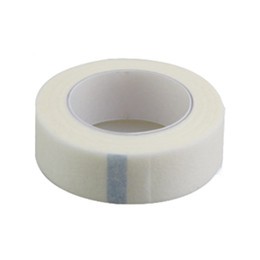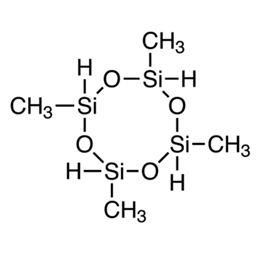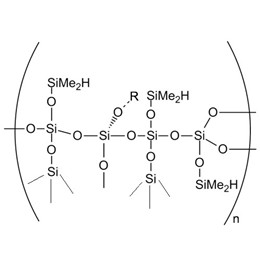Silicone is widely used as silicone sealant in construction, electronics, and other industrial applications with excellent performance due to its unique structure with excellent weather ability, durability, high temperatures and low temperatures resistance, UV radiation resistance, and flexible bond ability, which can provide a watertight seal. What is silicone adhesive?
Adhesives have the role of connecting objects through adhesion and cohesion by surface bonding and can connect the same or two or more homogeneous or heterogeneous parts (or materials), which are organic or inorganic, natural or synthetic substances of a class with sufficient strength when cured.
Silicone adhesive is a silicone resin-based adhesive, which is a single-component, semi-transparent paste-like or liquid form room temperature curing adhesive, and natural curing of high-performance elastomers. Different from other adhesives, it has excellent resistance to cold and heat, aging, and electrical insulation properties, and has good adhesion for most of the metal and non-metallic materials. It is mainly used for bonding metal and heat-resistant non-metallic materials, the resulting joints can be used in the temperature range of -60 ℃ ~ 200 ℃. Silicone resin in a number of different functional groups, different substituents, and different degrees of polymerization, branching degree, and crosslinking degree, so the performance of the product is different and adapted to different uses.
Here's some information about it:
- How to add silicone resin to adhesive?
- What is silicone pressure-sensitive adhesive?
- What is silicone rubber adhesive?
- What is a silane coupling agent?
- How to make silicone adhesives?
1. How to add silicone resin to adhesive?
Usually, the R/Si of silicon monomer is between 12~15, the cured silicone resin has poor strength and good flexibility when higher than this value, the crosslinking degree is high, and the silicone resin is hard and brittle when lower than this value. The glass temperature changes (Tg) of cured silicone resin is more than 200℃. The phenyl content in methyl phenyl silicone resin has a great influence on the condensation speed and hardness of the product. Containing phenyl improves the thermoelasticity and compatibility with pigments and thermal stability of the product. Phenyl Sesquioxane (silicone ladder polymer) is a ladder polymer with outstanding heat resistance and starts to lose weight only when heated to 525℃ in air.
Trapezoidal polymers with silicon as the main chain have good heat resistance, heat-resistant up to 1300 °C, and still have a certain strength at 1250 °C. Linear cyclic silicone nitrogen polymer does not decompose at 450 ℃ ~ 480 ℃ and can be used for a long time at 450 ℃. The introduction of a variety of aromatic heterocycles or other heat-resistant ring structures and heteroatoms into siloxane's main chain can improve its overall performance under the premise of not reducing its heat resistance. The introduction of the cage structure of Byodecaborane into the main chain of Polysiloxane reduces the movable rotation capacity of the chain links, increases the rigidity, and improves the glass transition temperature.
The introduction of Aryl rings significantly changed the heat resistance, adhesion properties, cohesion strength, and radiation resistance. Adding Phenylene, Diphenyl ether substituent, Biphenyl substituent, and other Arylkylidene varieties on the main chain, the radiation resistance is strong, and the high-temperature resistance can be up to 300℃~500℃. The introduction of the Butyl group on the main chain of siloxane increases the compatibility with alkyd resin, polyester resin, etc. The introduction of Phenyl can improve the thermal elasticity of the product, the mixing capacity with the pigment, the adhesive, and thermal stability. The best self-extinguishing flame retardant silicone sealant can be obtained with the introduction of appropriate phenyl (7%~20%mol). The dielectric properties are very good with the introduction of heterocycles.
The introduction of ferrocene structure with conductivity. The introduction of Al, B, Ti, Sn, and other heteroatoms can improve heat resistance, adhesion, and self-adhesive properties. Changing the side chain structure, introducing Cyanoethyl, γ-Trifluoropropyl, Aliphatic Amine group, Aromatic amine group, Chloromethyl group, Epoxy group, etc. to improve its oil resistance, adhesion, and cohesion strength.
Phenolic resin, Epoxy resin, Polyester resin, and Polyurethane resin modification have good adhesion performance, room-temperature curing, and high-temperature resistance. Silicone resin has good adhesion to metals such as iron, aluminum, and tin, and it is easy to bond with glass and ceramics, but the adhesion to copper is poor. Silicone adhesives are based on pure silicone resin, adding inorganic fillers and solvents mixed, releasing small molecules when curing, it needs to be heated and pressurized.
The curing temperature of silicone resin-based adhesive is too high, and its application is limited. Adding a small amount of original Ethyl Silicate, Potassium Acetate, Silicate Glass, etc., curing temperature down to 220℃~ 200 ℃, high-temperature strength is still 392-490 MPa, pure silicone resin mechanical strength is low, and Polyester, Epoxy or Phenolic and other organic resins copolymerization and modification, can obtain high-temperature performance and excellent mechanical properties for high-temperature structural adhesive.
XJY-8205M Methyl MQ Silicone Resin Toluene Solution
It is an important liquid form raw material for silicone pressure-sensitive adhesives.
![]()
2. What is silicone pressure-sensitive adhesive?
Silicone adhesive is divided into methyl and phenyl-modified types according to the chemical structure, composed of the silicone raw adhesive and MQ resin (the condensate of water glass and trimethylchlorosilane ), the raw adhesive is a straight-chain Polysiloxane, and is the continuous phase, wherein the lateral methyl group may be partially substituted with phenyl group. Raw adhesive and resin are dissolved in a solvent, through the condensation between the hydroxyl group so that they are chemically reacted with each other.
Applications
Silicone pressure-sensitive adhesive can stick with a variety of difficult-to-stick-to substrates such as non-surface treatment of Polyolefins, Plastics (Fluoroplastics), Polyimide, and Polycarbonate, which have been successfully used in Alaska oil pipeline adhesive bonding, they are also used in the manufacture of glass cloth tape, mica insulating tape, etc., which is widely used in automotive, shipbuilding process, generators and motors, electrical insulation, chemical etching processing of the mask, the gas shield and the chemical shielding, chemical shielding and so on as a great option.
![]()
XJY-301/XJY-302 silicone pressure-sensitive adhesive (SPSA)
![]()
It is a special adhesive composed of silicone resin (commonly used MQ silicone resin), silicone rubber, catalyst, crosslinking agent, and other additives. It is a kind of colorless and transparent viscous liquid form. It can be bonded to silicone rubber and Teflon materials and can be a great option in aluminum substrate laminating tape, fiberglass cloth, high-temperature green tape, PI, PTFE tape, and mica insulation tape.
![]()
3. What is silicone rubber adhesive?
Silicone rubber is divided into high-temperature vulcanized silicone rubber (HTV) and room-temperature vulcanized silicone rubber (RTV) according to its curing mode.
3.1 Why use RTV?
Due to the high-temperature vulcanization silicone rubber adhesive flexible bond strength is low, complex processing equipment, greatly limiting its application.
Since the emergence of room-temperature vulcanized silicone rubber in the early 1960s, its development has been increasingly rapid. Room temperature vulcanization silicone rubber in addition to having oxidation resistance, resistance to high and low-temperature alternation, cold, ozone, excellent electrical insulation, moisture, and other good properties, the biggest feature is easy to use. Most of the current silicone room temperature vulcanization silicone rubber is still based on hydroxyl-capped PDMS. According to the form of commodity packaging, can be divided into one-component and two-component room-temperature vulcanization of silicone rubber.
3.2 One-component RTV
One-component room temperature vulcanization silicone rubber is a multi-functional silicone and moisture in the air after contact with the crosslinking curing, curing small molecules, there are Deacidification, Deoximization, Dehydrogenation, Deamidation, Deketonization, Deamidation, and so on. Crosslinking agents are silanes with more than two functional groups per molecule. Silane coupling agents are also commonly used as crosslinking agents.
3.3 Crosslinking agents
The adhesive properties of different crosslinker types are in the following order (large to small): Deacetic acid type, Amine type, Ketoxime type, Amide type, and Alcohol type. Acetic acid type is low cost and has good bonding strength for most materials. Neutral room temperature vulcanized silicone rubber due to non-corrosive, and the development is faster. Ketone RTV has good adhesive and heat resistance and storage stability, odorless, non-corrosive, without organic carboxylic acid metal salt as a catalyst, and non-toxic vulcanized rubber. The use of mixed crosslinking agents is also conducive to improving the strength of the flexible bond.
3.4 Catalysts
Commonly used catalysts are tin, titanium, platinum, and other organic compounds, amines, and organic lead, zinc, zirconium, iron, cadmium, barium, and manganese carboxylates. The use of titanium complex catalysts can improve the adhesive strength of alcohol RTV. The vulcanization time can be controlled by adjusting the catalyst type and dosage. Stannous octoate gels the sealant in a few minutes, while Dibutyltin Dilaurate can gel in a few hours.
3.5 Cross-linking reaction
The cross-linking reaction of one-component RTV begins with the vulcanization of the adhesive surface in contact with atmospheric moisture and spreads further inward, resulting in a limited adhesive layer thickness. RTV is divided into Two-component RTV condensation and addition of two types, condensation is in the catalyst organotin, lead, etc., under the action of the hydroxyl group at the end of the silicone polymer and crosslinking agent can be hydrolyzed in the condensation reaction, the condensation reaction is mainly de-alcoholization and dehydrogenation of two major categories, catalyst dosage of generally 0.1% to 5%.
The addition reaction type RTV is produced by the silica-hydrogen addition of vinyl silicone and hydrogen silicone under the action of a catalyst such as platinum or rhodium. The biggest advantage of two-component RTV is that the surface and the internal uniform vulcanization, that is, deep vulcanization. But two-component RTV adhesive performance is poor, commonly used silane coupling agent as a primer or tackifier can improve the strength of the adhesive bond. RTV polysiloxane molecules were spiral curly, silicon hydrogen bonding polarity offset each other, connected to the silicon atom on the nonpolar groups lined up in the spiral silicone oxygen on the outer side of the main chain, therefore, the strength of the RTV itself and the adhesion strength of a variety of materials is relatively low, commonly used to add reinforcing filler such as fumed silica to improve the strength of RTV. To improve the strength of RTV, the use of silicone rubber blended with other organic polymers or changing the structure of the main chain of silicone rubber also can be it.
XJY-8207 (S/M) Hydrogen MQ Resin
It is a polycondensate from four functional group siloxane(Q) and One functional group methyl siloxane(M), the molar mass is generally 2500-5000g/mol, the molecular structure of M and Q chain ratio, and the structural nature of the M decision resin applications. It has a Si-H unit on the Q unit, which is the main active unit. It can be a great option as reinforcing filler for RTV rubber.
![]()
XJY-705 1,3,5,7-Tetramethylcyclotetrasiloxane TMCTS
It is a kind of reactive silicone containing silicone-hydrogen bonding, which can change with unsaturated olefin by addition. It can be used to prepare special crosslinking agents for the synthesis of room-temperature vulcanized silicone rubber (RTV).
![]()
4. What is a silane coupling agent?
Silane coupling agent is a class of silicone compounds with a special structure, its general formula is Y-R-SiX3, in which Y can be reacted with organic compounds and functional groups, such as Amino, Vinyl, Mercaptan, Epoxy, Methacryloyl, etc.; R is a short-chain alkenyl group; X is a hydrolyzable and can be generated -OH groups, such as alkoxy, acyloxy, and halogen, etc. X and Y are two types of reactive groups with different reaction characteristics, in which X is the easy way to produce a strong chemical and physical combination with inorganic compounds; and Y is easy to produce a strong chemical or physical combination with organic resins, rubbers, and so on, so through the silane coupling agent can be combined with inorganic and organic materials to obtain satisfactory results.
The silicone coupling agent can not only be used as an interface treatment agent, waterproofing agent, and reinforcing agent for composite materials, but also widely used as a tackifier, surface modifier, crosslinking agent, rust and oxidation prevention of metal, glass, and ceramics protection, finishing of fiber and leather, and petroleum extraction and transportation and other purposes.
Most of the silane coupling agent is γ-type trifunctional coupling agent, that is, the silicon atom is connected with three hydrolyzable groups, and the γ carbon of the silicon atom is connected with a reactive group, and there are mainly the following types:
(1) Ordinary straight-chain alkyl coupling agent, which does not resist high temperature;
(2) High-temperature-resistant coupling agent, which is mainly aromatic silane, such as silanes containing cyano-phenyl, chlorobenzene, bromobenzene, or toluene;
(3) Cationic coupling agent has wide applicability, and is soluble in water and organic solvents, is not sensitive to air and humidity, is active for many thermosetting resins and thermoplastic resins, inorganic materials or metals, can enhance the bonding between inorganic substances and polymer surfaces;
(4) The Water-soluble silane coupling agent needs to mix with the resin as slurry form when using, the effect is good.
Cationic coupling agent, peroxide type coupling agent is particularly effective in improving the strength of polyolefin thermoplastic resin. Coupling agents containing sulfhydryl groups have good effects on rubber elastomers. The biggest problem of trifunctional silane coupling agents is that the functional groups in the silane are easy to react with the resin group and make the resin storage stability decline, so there is a series of difunctional silane coupling agents, to overcome the trifunctional silane coupling agent of the above shortcomings.
![]()
5. How to make silicone adhesives?
Silicone adhesives have high modulus, impact resistance, vibration resistance, strong activity, high flexible bond strength, high-temperature performance, good thermal stability, ultraviolet resistance; ozone-resistant chemical media, moisture resistance, weather resistance (ozone, sunlight), chemical resistance (acids, alkalis, oils), resistance to biological (fungal) invasion, excellent electrical properties and other characteristics, does not contain toxic ingredients. They are widely used as liquid-form silicone sealants in food, packaging, construction, automotive, electronics, molded products, and other fields. How to make your products more competitive?
XJY Silicones is one of the leading silicone MQ resin and VMQ silicone manufacturers in China, with more than 30 years of R&D and manufacturing experience in the silicone industry and more than 15 related patents and technical support. Our silicone raw material products can meet the needs of silicone adhesives and support the provision of diversified customized solutions.



